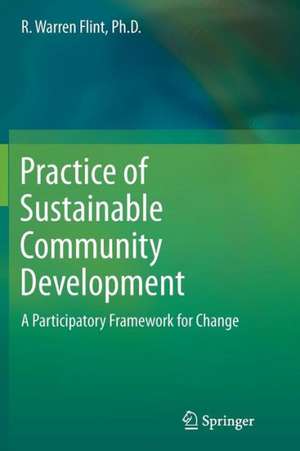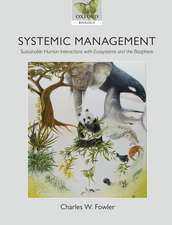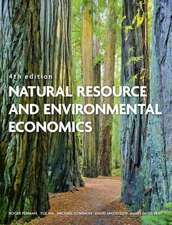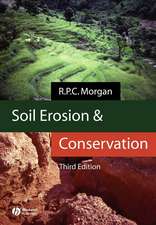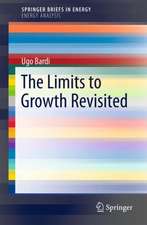Practice of Sustainable Community Development: A Participatory Framework for Change
Autor R. Warren Flinten Limba Engleză Paperback – 9 noi 2014
| Toate formatele și edițiile | Preț | Express |
|---|---|---|
| Paperback (1) | 1116.89 lei 43-57 zile | |
| Springer – 9 noi 2014 | 1116.89 lei 43-57 zile | |
| Hardback (1) | 1130.45 lei 43-57 zile | |
| Springer – 18 oct 2012 | 1130.45 lei 43-57 zile |
Preț: 1116.89 lei
Preț vechi: 1362.05 lei
-18% Nou
Puncte Express: 1675
Preț estimativ în valută:
213.72€ • 223.70$ • 177.88£
213.72€ • 223.70$ • 177.88£
Carte tipărită la comandă
Livrare economică 31 martie-14 aprilie
Preluare comenzi: 021 569.72.76
Specificații
ISBN-13: 9781493900107
ISBN-10: 1493900102
Pagini: 484
Ilustrații: XXVI, 458 p.
Dimensiuni: 155 x 235 x 25 mm
Greutate: 0.68 kg
Ediția:2013
Editura: Springer
Colecția Springer
Locul publicării:New York, NY, United States
ISBN-10: 1493900102
Pagini: 484
Ilustrații: XXVI, 458 p.
Dimensiuni: 155 x 235 x 25 mm
Greutate: 0.68 kg
Ediția:2013
Editura: Springer
Colecția Springer
Locul publicării:New York, NY, United States
Public țintă
Professional/practitionerCuprins
Acknowledgements.- Preface.- Foreword.- Chapter 1 – Introduction.- Chapter 2 – Basics of Sustainable Development.- Chapter 3 – Operationalizing Sustainability in Community Development.- Chapter 4 – System Thinking in Community Development.- Chapter 5 – Evaluating Community Knowledge Assets and Resources.- Chapter 6 – Understanding the Community Context.- Chapter 7 – Promoting Stakeholder Interest & Involvement.- Chapter 8 – Building Capacity for Community Change.- Chapter 9 – Creating a Community Vision.- Chapter 10 – Analyzing Community Problems & Defining Objectives.-Chapter 11 – Developing a Strategic Sustainability Plan.- Chapter 12 – Evaluating Community Improvement.- Chapter 13 – Sustainability and Governance.- Chapter 14 – Key Community Issues for Change.- Chapter 15 – Case Study Examples of SCD.- Chapter 16 – Financial Sources for Sustainability Actions.- Chapter 17 – Final Thoughts.- Index
Textul de pe ultima copertă
This book details a systemic approach to the practice of sustainable community development (SDC) that will encourage full participatory involvement and earn confidence for all peoples. Since Brundtland there has not been a more thorough presentation of sustainable development than the first 3 chapters of Practice for Sustainable Community Development. After fully engaging in the meaning of sustainability, the reader – the student, the practitioner, and the community leader – is presented with experiences of people, relationship building, group dynamics, and community improvement methods that a practitioner of SCD would experience. Practice for Sustainable Community Development discusses, analyzes, and encourages alternative actions at the community level to promote wide-spread change, while fostering local choices that lead to more self-sufficiency and to the buffering of communities from the impacts of business as usual.
The reader is taken step-by-step through a community development procedure, that includes processes of community assessment, visioning, setting of goals and objectives, and defining strategic actions that can be pursued to achieve the measured outcome of sustainability. Through application of the tools and strategies discussed, community members are putting aside day-to-day concerns in recognition of the bigger picture that nature and people are inescapably under the influence of one another through connecting relationships. The brilliance of the sustainability movement is its demand for seeing things as interconnected and interdependent – its ability to provide a bridge between disciplines and interests, between the pieces of the whole and the whole itself.
This book’s purpose is to discuss the difficulties and opportunities of getting societies to engage with issues from an environment fraught withunforeseen events and unexpected outcomes, where the science is pretty good but the social response, from politics to economics, is focused elsewhere. The book emphasizes that if we can begin to judge proposed actions and policies for their economic value as well as for their ecological and evolutionary affects, we will be following a model of sustainability by associating different human values with the multiple dynamics of natural systems.
The reader is taken step-by-step through a community development procedure, that includes processes of community assessment, visioning, setting of goals and objectives, and defining strategic actions that can be pursued to achieve the measured outcome of sustainability. Through application of the tools and strategies discussed, community members are putting aside day-to-day concerns in recognition of the bigger picture that nature and people are inescapably under the influence of one another through connecting relationships. The brilliance of the sustainability movement is its demand for seeing things as interconnected and interdependent – its ability to provide a bridge between disciplines and interests, between the pieces of the whole and the whole itself.
This book’s purpose is to discuss the difficulties and opportunities of getting societies to engage with issues from an environment fraught withunforeseen events and unexpected outcomes, where the science is pretty good but the social response, from politics to economics, is focused elsewhere. The book emphasizes that if we can begin to judge proposed actions and policies for their economic value as well as for their ecological and evolutionary affects, we will be following a model of sustainability by associating different human values with the multiple dynamics of natural systems.
Caracteristici
An overview of the foundations of sustainable community development A step-by-step guide to how to get the community involved An example of case studies in sustainable community development Includes supplementary material: sn.pub/extras
